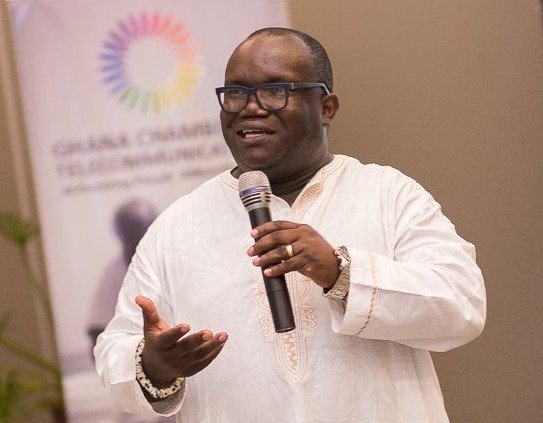
Telecommunication companies in the country spent GH¢84.1 million last year to fix 6,232 fibre optic cables destroyed by contractors during excavation work for various projects.
Data from the Ghana Chamber of Telecommunications indicate that the average cost per repair was GH¢382,492.61 while the damage causes service disruptions and financial losses to the networks.
To address the persistent fibre cuts and make the contractors take responsibility for their actions, the chamber is preparing to take legal action against contractors who damage the cables.
The Chamber’s Chief Executive Officer (CEO), Dr Kenneth Ashigbey, disclosed to the Ghanaian Times on Monday, that the chamber was collaborating with state institutions to pursue both criminal and civil actions.
Noting that the financial impact of these fibre cuts was becoming unsustainable, Dr Ashigbey warned, “We’re getting to the point where we may have to pass this cost on to subscribers.”
He said the legal action had been the last resort after several engagements with contractors on how to handle their construction without damaging the fibre cables.
“We’ve been talking to the road agencies; we’ve been talking to the contractors. This year, for example, we went to the Annual General Meeting (AGM) of the Contractors Association. There’s a body also called the National Engineering Coordinating Team where all the road agencies meet. Despite these efforts, some contractors remain recalcitrant,” he said.
Dr Ashigbey said a specialised court has been established to handle these cases, and judges have received training on the implications of fibre cuts for national security and service quality.
He explained that the damage of fibre cables by the contractors was an offense as captured by the Cyber Security Act 2020 (Act 1038), the Criminal Offences Act 1960 (Act 29) Sections 127A, 172, and 173, the Electronics Communications Act 2008 (Act 775) Section 77, and the Electronics Transactions Act 2008 (Act 772) Section 128.
In addition, he said the Ministry of Transport’s Standard Specification for Road and Bridge Works states, inter alia, that “the contractor shall take all reasonable precautions to protect existing services during construction and during their relocation and will be held responsible for any damage caused by him to existing works or services.
“He shall indemnify the employer against any claims in this respect (including consequential damages). The contractor shall be responsible for the reinstatement of services so affected, at his expense and to the satisfaction of the engineer.”
Aside from legal actions, Dr Ashigbey mentioned that the chamber was embarking on a public awareness campaign to help subscribers understand the link between contractor actions and service quality issues.
The chamber’s campaign, he said included slogans such as “save our fibre” and “fibre cuts = bad internet,” which aims to educate the public on the direct correlation between fibre cuts and poor internet service.
Dr Ashigbey said it was important for everyone to support the awareness creation efforts because persistent fibre cuts not only affect private telecom companies but also government-owned infrastructure.
In one instance, he said, the Eastern Corridor fibre network was so severely damaged that only two out of 48 fibre cores were functioning, requiring significant government expenditure to repair.
BY JONATHAN DONKOR







